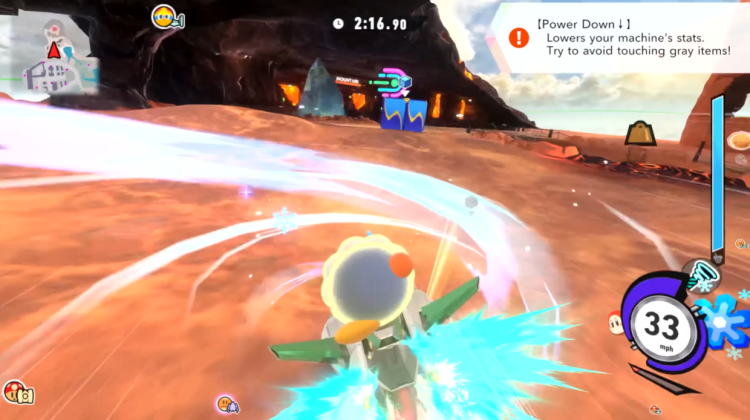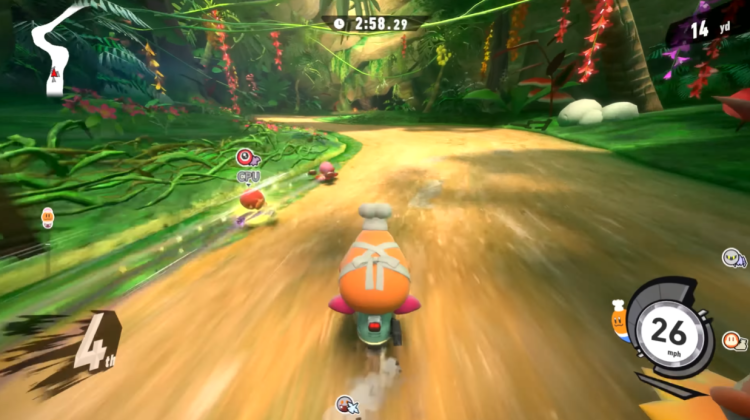Kirby Air Riders Review: A Revival That Charges Hard
From the moment you start, the title announces its intent: more than 20 machines with varying handling, a comparable number of riders each with distinct stats and special moves, and unlockables stacked so thick that the player is almost drowning in them.
The new entry in the series, Kirby Air Riders, lands with ambition and polish. In his review for IGN, Logan Plant argues that the game makes “a significant leap forward.”
“The improvement from Air Ride on GameCube to Air Riders on Switch 2 is so huge, it feels like jumping straight from Smash 64 to Ultimate with no sequels in between.”
The controls rest on a minimalist foundation: one main button for braking/boost-charge, the left stick for steering and gliding. That simplicity is deliberate, but it is also picking up quickly one of the game’s central tensions. As Plant notes, “skidding around corners on a floaty machine doesn’t feel natural at first,” and some machines impose quirks (one can only steer while braking, for example). The effect: a racing experience that delivers raw velocity and momentum but asks you to adapt.
In standard racing mode, dubbed “Air Ride,” the template is familiar — six-player races, familiar tracks, drifting, boosting, gliding. Yet the execution pushes harder than the previous title. When you’re racing, opponents leave star-trails, you’re encouraged to follow their lines, to inhale enemies or spin the machine rapidly, to land jumps square to gain speed. These mechanics elevate the game’s skill ceiling.
“There are more things to consider in Air Riders that raise its skill ceiling to a satisfactory level.”
Track design stands out. One favorite of Logan’s is “Mount Amberfalls,” a downhill sprint through forested slopes, high speed, switchbacks, glides, and branching paths. Returning courses help anchor the experience. The new tracks feel roller-coaster-like; the older ones are simpler but still fun. The contrast highlights how much the developers pushed the envelope for the sequel.
Online systems are robust: lobbies handle 32 players, casual and ranked matchmaking exist, and there is an invite system for friends, notable in a large first-party “Nintendo”-adjacent title. Logan found online play “very smooth” during testing ahead of launch. The presence of such solid online features suggests a commitment to longevity.

But the game is not without flaws. The underlying control scheme is constrained by its own history. Even with improvements, the core one-button approach makes certain modes feel stretched beyond what the mechanics can cleanly support. In the “Road Trip” mode (a single-player campaign recasting other modes into bite-sized challenges), combat-oriented tasks feel especially awkward: attacking a specific rival in a frantic race exposes the limitations of the control set.
“It’s just not precise enough to support it.”
In “Top Ride,” a bird’s-eye racing mode inspired by the original, the experience is shorter, simpler — almost an afterthought. Logan describes it as “the weakest part of Air Riders… only really works as a quick distraction.” In modes like this, the breadth of the title almost becomes an encumbrance rather than an asset.
The showpiece remains “City Trial,” a free-form battle mode where up to 16 riders drop into an open city map, gather power-ups, build machines, and then compete in one of several minigames. Logan writes: “Over 20 years later, City Trial is still the highlight of this package.” He describes diving into volcanoes, finding power-ups on remote islands, battling random bosses, all while trying to create the strongest machine you can in the allotted time. This mode delivers chaos and joy in equal measure, particularly when played with friends. The technical performance holds up: Logan observed the game running at 60 fps in single-player and maintaining that even with four players on screen, with only occasional hiccups.

But City Trial has its own quirks: in large multiplayer sessions, the final minigame is selected such that friends may not end up in the same event, which undercuts the shared social moment. Logan flags this as a design choice that sometimes works against the experience. He writes: “Sometimes City Trial gets too hectic, though, to the point where it borders on overwhelming.” That sense of losing control is intrinsic to the mode’s spirit, but it may push some players away.
One area the game excels in is replayability. With 750 achievements spread across modes, meaningful unlockables (characters, vehicles, tracks, music), and a style of progression that rewards side-objectives and mastery, the game ensures long-term engagement. Plant writes that after “more than 25 hours,” he still had “over one hundred” unlocks left. Moreover, there are no real-money microtransactions: the in-game economy allows customization purely through earned currency. That commitment to fairness and depth shows.

Visually and sonically, the game leverages its pedigree well. The character-select screen includes an announcer who shouts each machine and rider combination. The music player lets you control how often each track plays. Rulesets and customization run deep. It all combines into a package that feels polished and self-aware of its heritage.
“Everything you do earns you money… You’re constantly unlocking achievements you didn’t know existed.”
Ultimately, the verdict: Kirby Air Riders is not perfect. It won’t replace stalwarts like Mario Kart 8 Deluxe or Super Smash Bros. Ultimate in their respective domains. The control scheme remains unconventional and less immediately accessible than a typical kart racer; the competitive depth does not match the very top echelon of fighters or precision racing titles.
“I’m not sure what’s crazier: the fact that Kirby Air Riders exists, or the fact that it’s this great.”
If you accept its oddities — the slippery machines, the one-button approach, the hectic open-world battle mode — you’ll find a racing game with real character, abundant content, and a willingness to do something different. If you’re after straightforward pick-up-and-play ease, this may not be your ideal choice. But if you’re willing to lean into the formula, you’re rewarded with a vibrant, unexpected sequel that pushes a niche into something substantial.


EGAMERSW - get 11% Deposit Bonus + Bonus Wheel free spin
EXTRA 10% DEPOSIT BONUS + free 2 spins
BEST ODDS, free daily case, free rains, daily, weekly and monthly rakeback!

Sign up now and get 2 FREE CASES + 5$ Bonus
3 Free Cases + 100% up to 100 Coins on First Deposit



Comments